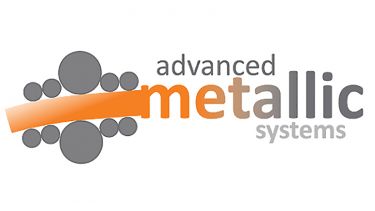Nitinol (NiTi) and Inconel 939 (IN939) are nickel-based superalloys that are used in cutting-edge biomedical and aerospace applications. In the biomedical realm, NiTi's unique combination of shape memory and superelasticity has positioned it as a game-changer in the development of advanced medical devices, such as stents and orthopaedic implants. Simultaneously, IN939 takes centre stage in aerospace engineering, offering a robust solution for high-temperature and high-stress environments. In this study, the thermal properties of these materials were explored for a wide range of temperatures through state-of-the-art technology and collaborative expertise.
The single bead model in Ansys Additive software is designed to predict the melt pool dimensions in powder bed fusion using a laser beam (PBF-LB) additive manufacturing process. It is based on three temperature-dependent properties i.e., thermal conductivity, specific heat, and density of the material. The model necessitates these properties across a temperature range spanning from below room temperature to beyond the material's melting point, extending into the liquid state. For comprehensive thermal analysis, the Laser Flash Apparatus (LFA) is instrumental in acquiring the thermal diffusivity of a material for a wide temperature range including temperatures above the melting point of the material. In the present study, solid-state thermal diffusivities were measured from 0°C to 1200°C, closely approaching their respective melting points (NiTi - 1290°C, IN939 - 1320°C), determined through differential thermal analysis (DTA). Concurrently, specific heat (Cp) and density [ρ(t)] were evaluated using differential scanning calorimetry (DSC) and dilatometry across the same temperature range, in order to calculate the thermal conductivity. Subsequent phases of the study will extend these assessments into the liquid state of the materials. The gathered data forms a crucial foundation for the Ansys software's material tuner, enabling the addition of NiTi and IN939 into the material library. These comprehensive datasets are integral for running simulations, facilitating predictions of PBF-LB melt pool dimensions for these materials across various parameter combinations. This approach not only refines the accuracy of simulations but also contributes valuable information for advancing the capabilities of additive manufacturing processes using Ansys software.
I've had an enriching experience with the Advanced Metallic Systems Centre for Doctoral Training (AMSCDT) thus far. I extend my sincere gratitude to the entire team for affording me valuable opportunities to explore research collaborations with other institutions. These visits have been helpful in accessing specialised equipment that significantly elevates the caliber of my research. A particular highlight was my recent visit to the University of Liège, an experience that exceeded my expectations. The warm reception from the staff made me feel truly welcomed, and their assistance played a crucial role in the seamless execution of my experiments. I am eager to explore potential collaborations that may arise from this visit and anticipate fruitful partnerships in the future.
Sampreet Rangaswamy
IMPACT
Nickel-based superalloys, NiTi (Nitinol) and IN939 (Inconel 939) are used in various aerospace, automobile, and biomedical applications owing to their extraordinary properties. Additive manufacturing is the process of building a component layer by layer and is capable of producing parts with intricate geometries and precise dimensions. Determining the process parameters of metal Additive Manufacturing which result in specific properties, such as level of porosity, induced strain, and tensile strength is still challenging and requires detailed investigations for new materials and geometries. The absence of a comprehensive process design database complicates the task for product design and development teams, hindering their ability to determine and optimise process parameters. A process design database is pivotal, offering reverse engineering capabilities to users and empowering process engineers to precisely set parameter levels, ensuring the desired quality and capabilities of the produced parts. Ansys Additive Science is a relatively new software that can be used to simulate additive manufacturing processes. However, there is a lack of property data for Nitinol and IN939 alloys in the material library of the software. Hence, the thermal models developed in Sampreet’s project will be used for updating the material database of the software. The outcomes of this research are anticipated to benefit both academic and industrial users of the software by enhancing the quality assurance of AM-produced parts and facilitating the optimisation of process parameters.
BIO
Sampreet Rangaswamy is a PhD researcher with the Advanced Metallic Systems Centre for Doctoral Training, based at Dublin City University (DCU) and sponsored by ANSYS Inc. His PhD is focused on the development and validation of the thermal models for additive manufacturing of Nitinol/IN939. The research involves investigating the properties and optimising the process parameters in additive manufacturing of Nitinol and Inconel 939 alloys. Sampreet completed his bachelor’s degree in Mechanical Engineering from SRM Institute of Science and Technology (India). He obtained his master’s degree in Advanced Engineering Materials from the University of Manchester (UK). He achieved distinctions in both bachelor’s and master’s degrees. Sampreet worked on laser and TIG welding of Hastelloy C-276 during his undergraduate studies and for his master’s degree, he examined the microstructural evolution of aluminium alloy 7075 during solution heat treatment using CALPHAD method. He has participated in several international conferences and published articles in well-reputed journals.
EQUIPMENT
Aconity3D MINI, Nano Research Facility, Dublin City University, Ireland
Laser Flash Analysis, University of Liège, Belgium
Differential Thermal Analysis, University of Liège, Belgium
Differential Scanning Calorimetry, University of Liège, Belgium
Dilatometer, University of Liège, Belgium
Pycnometer, University of Liège, Belgium





